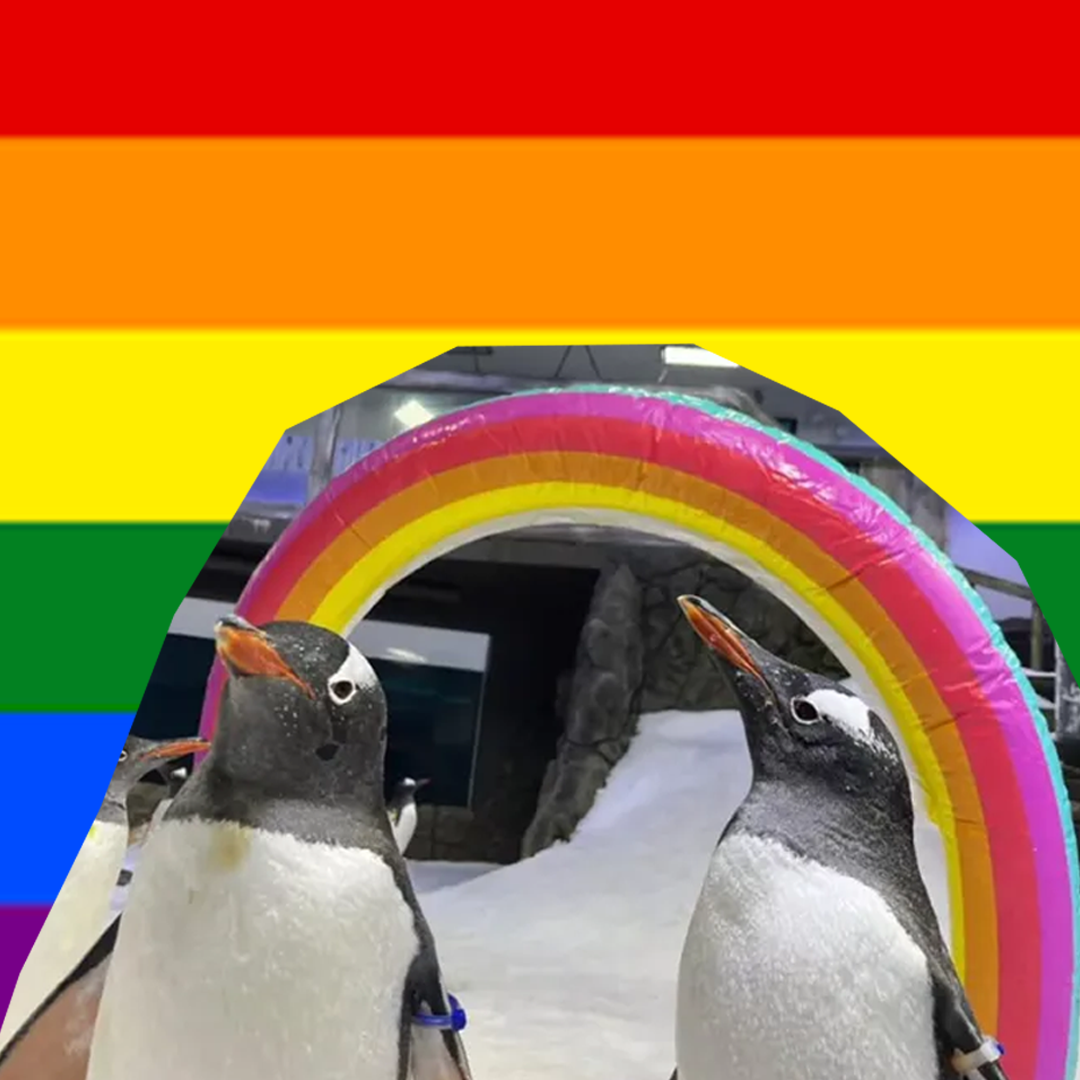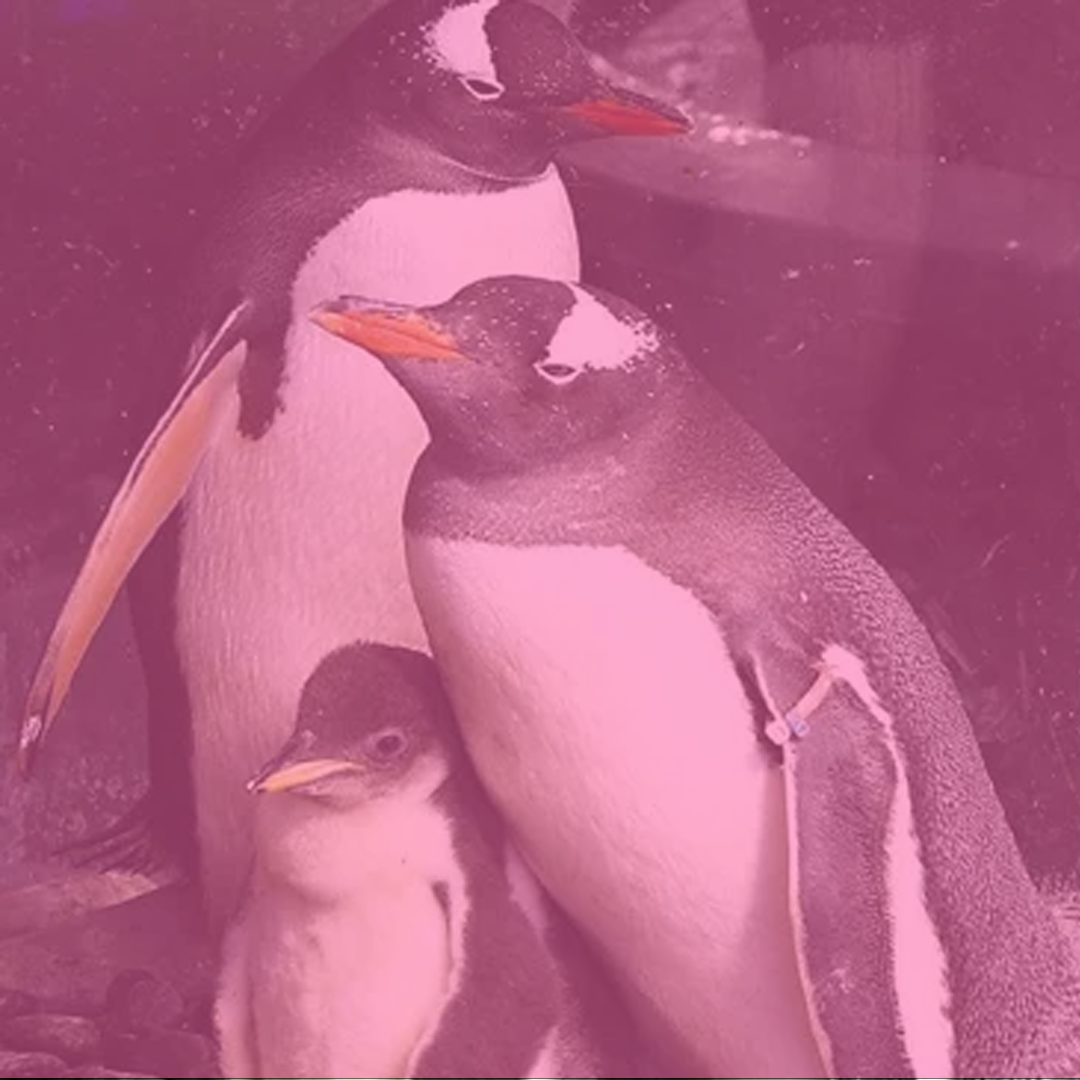Sphen the Penguin, Gay Animals & Heteronormativity in Nature
Words: Sihaam Naik
Make it stand out
Who gets to decide what’s “natural” and what isn’t? Feminist scholar Donna Haraway famously remarked, “We polish an animal mirror to look for ourselves.” In other words, we often use animals to reflect our values and beliefs, bending our understanding of nature to fit our preconceived notions. Take, for example, Sphen, the male gentoo penguin from Sea Life Sydney Aquarium. Sphen and his male partner, Magic, made headlines in 2018 when they became parents to two chicks — proving that love knows no bounds. Their story was more than just a feel-good narrative; it inspired a Mardi Gras float, was featured in Australia’s educational curriculum, and even appeared on Netflix’s Atypical. Sadly, Sphen passed away on August 22, 2024, but his legacy is enduring. His life demonstrated that effective parenting and love are not confined by species or gender.
So why does the sight of two penguins in a same-sex relationship — or any non-reproductive animal behaviour — stir such fascination and, occasionally, controversy? Psychologist and biologist James D. Weinrich hit the nail on the head: “When animals do something we like, we call it natural. When they do something that we don’t like, we call it animalistic.” This selective perception runs deep, especially in Western culture, where ideas about animals have been used to reinforce certain notions about human sexuality, particularly the belief that heterosexuality is “natural” and everything else is not. Researchers Sunitha Venugopal and Varshni Muthukrishnan frame it differently - that the inclusion of sexual orientation and desire within the scope of evolutionary concern led to the possibility that a variety of sexual practices and identities could be understood as "natural". Still, non-reproductive sexuality in animals is frequently explained away as something else — dominance displays, social bonding — rather than as a valid expression of sexual diversity.
___STEADY_PAYWALL___
Take biologist Valerius Geist, who observed wild male sheep in 1975 engaging in sexual activity but shied away from calling it homosexual. Instead, he coined the term “aggrosexual” to describe what he saw as aggressive dominance rather than, heaven forbid, gay sex. Geist’s reluctance to acknowledge homosexuality in these animals reveals a broader unease with the idea of queerness in the animal kingdom. This reaction underscores how deeply ingrained heteronormative beliefs are, even among scientists. While revolutionary, Charles Darwin’s pioneering work in evolution inadvertently gave a scientific pat on the back to the idea that animals procreate to reproduce and remains a through thread of much research in the time since. It all helps to cement heterosexuality as the “natural” order — not just in religious terms but in scientific ones, too. According to this view, nature’s sole purpose is reproduction, and any behaviour that doesn’t directly contribute to this goal is often brushed aside or reinterpreted. We see this rhetoric splashed across alt-right Twitter timelines still, the most infamous and most ominous tweet coming from Andrew Tate, urging his minions to “have kids or perish as species.”
Historically, the “naturalness” of heterosexuality has been wielded to justify discrimination. For example, US President Theodore Roosevelt once urged white women to reproduce more to avoid being outbred by “inferior” races. At the same time, psychiatrist George Henry blamed homosexuals for failing to contribute to species procreation. Children were once seen as the “capital” of a country, and women were expected to be the “mothers of the race.” In this context, lesbianism was particularly feared for its potential to disrupt a procreation-centric agenda. As recently as May of this year, the pronatal movement makes press for promoting nuclear family and heteronormative breeding agendas.
Yet, despite our tendency to project human values onto the animal world, animals remain blissfully indifferent to our concerns. Bruce Bagemihl’s Biological Exuberance celebrates the rich diversity of non-reproductive sexual behaviour in animals — from gay parenting to sex-changing fish. Male seahorses carry and give birth to their young, and certain fungi challenge traditional notions of male and female sex characteristics. The natural world is, in fact, a playground of fluid and varied sexual expression.
“Their animalistic instincts should inspire us to forgo labels and binaries in pursuit of a more fluid way of being.:
That doesn’t stop certain non-believers from spreading bigotry on the internet, detailing how much they disagree with our harmless penguin friends. “Maybe they really do have the same feelings for each other as do human gay couples, but we just don’t know.” The truth of the matter is - the animal world is brimming with countless gender variations and shimmering sexual possibilities - and those intent on upholding patriarchal norms can’t even begin to wrap their head around it.
Queer theory — which aims to challenge conventional boundaries of relationships, sex and sexuality — hasn’t fully explored the wide variety of queer tendencies of the natural world. It’s interesting to consider how we build the frameworks for the future of sexuality and gender, considering that the animal kingdom seems to have it all figured out. I’m reminded of the famous “gay fruit flies” of the mid-1990s. Researchers claimed to have created homosexual fruit flies through genetic manipulation. The media eagerly jumped on this story, turning these flies into symbols of broader discussions about sexual identity. “The males are having a party — no, an orgy — among themselves. With a frenzy usually reserved for chasing females, the males link up end-to-end in big circles or in long, winding rows that look like winged conga lines.” reads the findings, amusingly. However, the researchers themselves were cautious, suggesting their findings shed light on the complex interplay between genetics and behaviour rather than proving a single gene dictates sexual orientation.
Queerness, as Alissa Overend suggests, isn’t just a noun — it’s a verb. To “queer” is to question, challenge, and create space for new ideas and relationships. This perspective invites us to rethink and deconstruct the rigid categories of “normal” and “abnormal.” It reduces the concept of sexuality to a choice or a switch- rather than something inherent- not to mention the human-made concept of the binary. It’s easy for us to subscribe to ideas that have existed in the animal kingdom for centuries. Their animalistic instincts should inspire us to forgo labels and binaries in pursuit of a more fluid way of being.
Ever locked eyes with an animal before? Their eyes are large and unfeeling but somehow contain all the answers to the universe. As we stare glassy-eyed at our pets, our cats and dogs, and animals behind cages, and through the technicolour specs of the latest David Attenborough documentary, maybe we can feel comforted that they know something we don’t. We should stop theorising, and go to therapy, mourn the loss of Sphen the penguin, and take a page out of Mother Nature’s booklet and simply exist.


